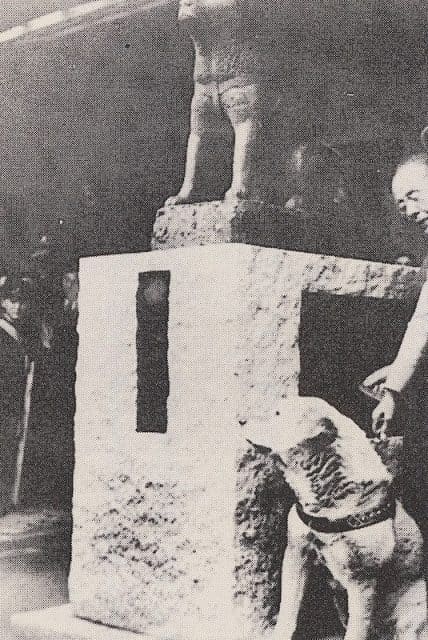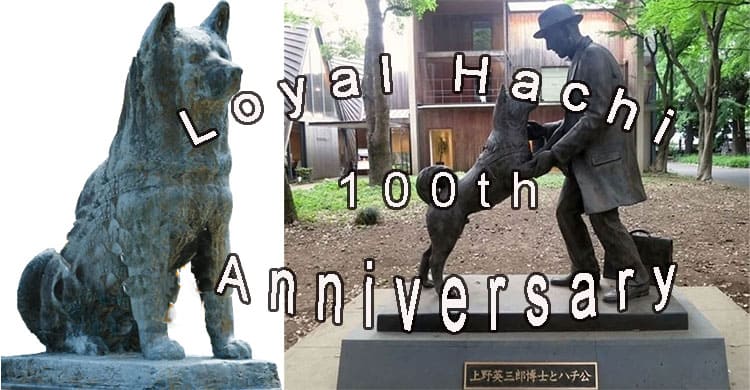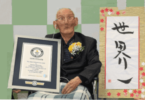Hi how are you? It is now on November 2023, this year marks “the 100th anniversary of the birth of Hachiko”.
Hachiko, his real name is “Hachi” but “ko” adding after to his name is honorific title, and the loyal dog now known not only in Japan but also worldwide.
The faithful dog Hachiko’s story is progressing to be adapted into a movie not only domestic but also overseas.
Hachiko celebrates his 100th birthday this November, and his popularity continues across generations, marked by various events being held in his honor.
Explaining the reason for Hachiko’s enduring popularity, let’s delve into the history of loyal Hachiko in video and text with actual images and real sound of Hachiko.
First, please watch the video for a brief synopsis of Hachiko.
To give you a better understanding, we also have text and actual images of Hachiko’s story with real sound. If you like, you can watch and listen it here.
Chapter 1: Hachiko and Dr. Ueno – November 1923
Hachiko was born in Odate City, Akita Prefecture, in November 1923. He left his birthplace at the age of about two months and was taken to Tokyo, a long journey of approximately 20 hours by train at the time (currently, it takes four hours by Shinkansen from Akita to Tokyo). Hachiko, nestled in a bale of rice straw, was swayed by the train to Tokyo.
Dr. Ueno Eizaburo, a dog lover living in present-day Shibuya, welcomed Hachiko.
Dr. Ueno, who cherished the faithful Hachiko, had Hachiko accompany him to Shibuya Station every day for his commute to Tokyo University.
Chapter 2: Farewell to Dr. Ueno – May 1925
The separation of the tightly bonded Dr. Ueno and Hachiko was sudden. Dr. Ueno collapsed due to a cerebral hemorrhage while at work at the university and passed away.
The death of Dr. Ueno, known as a person of integrity and beloved by many, brought deep sorrow.
Hachiko, not understanding why Dr. Ueno did not come home, started going to Shibuya Station, where Dr. Ueno used to commute, twice a day at 9 in the morning and 4 in the evening.
Chapter 3: Birth of “Loyal Dog Hachiko”
Hachiko continued to wait, whether on hot summer days, rainy days, snowy days, or windy days, at Shibuya Station, where many people passed by.
Some treated Hachiko as an inconvenience, but gradually, Hachiko’s unwavering loyalty captured people’s hearts.
The story of the aged dog patiently waiting for his deceased owner’s return for seven years was published in a newspaper in October 1932.
People who learned about Hachiko’s situation started treating him more kindly, and Hachiko continued to wait day after day.
Chapter 4: First Hachiko Statue – January 1934
As Hachiko’s popularity grew, there were calls to erect a statue of Hachiko in front of Shibuya Station.
Sculptor Ando Teru, attracted by the majestic and solid appearance characteristic of the Akita breed, initiated the Hachiko bronze statue project.
Letters and donations from across the country poured in, and in January 1934, the first Hachiko statue was completed.
Chapter 5: Hachiko, the Statue, and Shibuya Station
In the early Showa era, the Hachiko statue, with its back facing the ticket gate, was placed near Shibuya Station.
Hachiko, now famous, attracted many people bringing food. Even tourists from afar visited Hachiko.

As the years passed, the aging Hachiko spent more time quietly sleeping.

Hachiko watching his own statue
Chapter 6: Farewell, Hachiko – March 8, 1935
In the early Showa era around Shibuya Station, 11-year-old Hachiko’s legs gradually weakened, and on March 8, 1935, he quietly passed away near Shibuya Station.

A black-and-white ribbon adorned the Hachiko statue, and fresh flowers were placed at his feet as people prayed for the reunion of Hachiko and Dr. Ueno.
On the other hand, the Pacific War intensified, casting a shadow over the Hachiko statue.
In 1944, due to the resource shortage in the escalating war situation, a nationwide metal collection campaign began.
The Hachiko statue, designated for melting, was removed from its pedestal, and people bid farewell with regret.
Chapter 7: Hachiko Statue Reconstruction Plan – August 15, 1945
On August 15, 1945, with the end of the Pacific War, voices advocating for the reconstruction of the Hachiko statue increased.
Ando Takeshi, the son of sculptor Ando Teru, who had closely observed his father’s work, raised his hand for the reconstruction.
However, with limited documentation from that time, the production was not easy.
The securement of materials was challenging, and power outages hindered the work.
Nevertheless, overcoming numerous difficulties, the second Hachiko statue was completed in August 1948.
Reflecting on the process, Takeshi said he wanted to express the true love between a dog and a human, “true love.”

The Hachiko statue continues to be loved by many. The changing color and shining of the front paws are due to the countless people who touch them when visiting Shibuya.
Chapter 8: The Popular Figure in Shibuya, Hachiko Statue
The Hachiko statue, a symbol of Shibuya, remains unchanged, warmly watching over the evolving Shibuya city that continues to be loved by people, both now and in the past.
Finally, let’s listen to the real crying voice of Hachiko
,
This is a precious recording exhibited, recorded at Shibuya Station by one of Dr. Ueno’s students, a year before Hachiko’s death;
Let’s listen to the real crying voice of Hachiko
This story comes to an end, thanks for watching.















